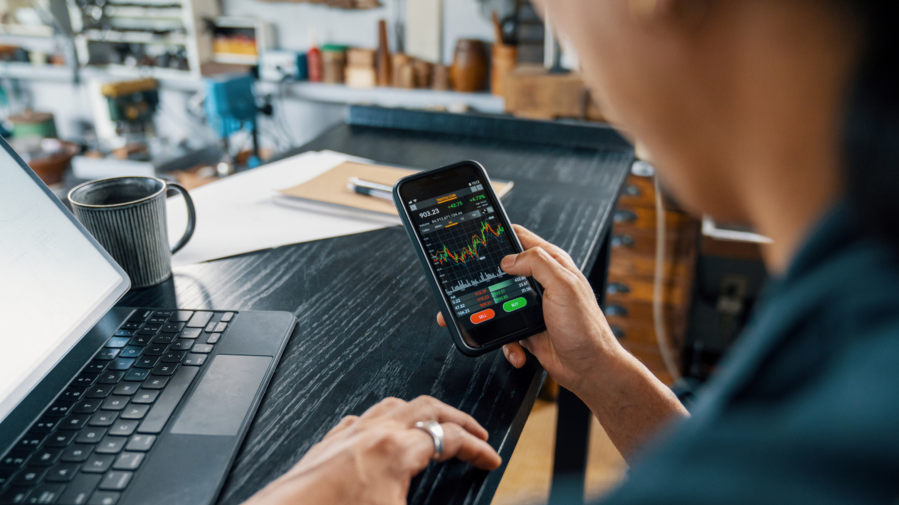
These days, a number of factors are conspiring to put tremendous downside pressure on the financial markets, not the least of which is high inflation, rising interest rates, and massive government spending. It can put fear in the hearts of most investors. Perhaps you wonder how to participate in the long-term potential of the stock market while at the same time making sure that you have significant downside protection.
One way to do this is to consider using deep-in-the-money covered calls as part of your investing program. This article will explain what deep-in-the-money-covered calls are all about.
Covered Calls: A Primer

Covered calls are a type of investment whereby an investor buys or already owns a stock and sells a call option against the stock to bring in additional income. If you sell a covered call, you may find your stock “called away” by the call option buyer on the other side of the transaction or the call may expire and you keep the stock and the premium you received by selling the call.
Before we get into the details, it is important for you to understand the concept of the option strike price. This is the price at which the option’s owner may purchase the call option’s underlying stock.
For any given set of options, there are many strike prices available for sale or purchase. If a given strike price is above the current stock price, it is referred to as being ‘in the money.” Conversely, if it is lower than the current stock price, it is termed ‘out of the money.” When selling a covered call, you are free to choose the strike price that makes the best sense for your desired outcome.
Covered Call Example
To understand this more fully, we’ll use an example. Say you own 100 shares of AT&T (T), which you bought for $20 per share. You are willing to sell this investment at $22 per share at any time. You decide that you would like to get paid while you wait for that price to be realized, so you sell a call option that expires two months into the future at the $22 strike price and receives a premium of $35 when you sell that option.
Two things are now possible: One is that the stock never rises to $22 and the call buyer never exercises her right to take the stock from you at that price. No problem for you because you get to keep the $35 premium free and clear. A second possibility is that T rises above $22 and your stock is called away at that stock price. Again, no problem for you because you were willing to sell at a profit and you still get to keep the premium as well.
What can go wrong with covered call investing? The biggest problem with them is that you cap your upside potential in the stock, and your downside protection may be limited.
Let’s go back to a difficult market like we are seeing in the first part of 2022. Is it possible to generate large downside protection using the covered call technique? Yes, there is. You can sell deep-in-the-money covered calls, obtain significant downside protection and still generate a very high premium income.
Deep-In-The-Money Covered Calls

When you sell a deep-in-the-money covered call, you will select a call option strike price that is significantly lower (i.e. deep in the money) than the current price of the stock. By doing so you will generate an immediate premium, which will be quite large, and you will likely be “called out” at some point at the strike price of your call option. Your plan is to generate more premium income than the loss that you would take if called out, so that the net result is a nice overall profit.
People that sell deep-in-the-money covered calls often utilize dividend-paying stocks as the underlying. The reason is that they are also desiring to profit from the stock’s dividend as well.
The downside protection that you get is quite significant. That is because the premium generated by deep-in-the-money covered calls is almost always quite high.
Deep-In-The-Money Covered Call Example
Again, there is nothing better than an example. Let’s look at Intel (INTC), the large-cap chip company. On May 12, 2022, you could have bought that stock for $42.50. INTC has an annualized dividend yield of 3.4 percent payable quarterly. You want to participate in the dividend potential, but are afraid of the market’s bearish inclination and want some serious downside protection.
You bought 100 shares of INTC at $42.50 and decided to construct a deep-in-the-money covered call, selling the Jan 2023 32.50 strike for $12.50. You immediately capture a very large premium of $1250 (100 shares times $12.50), representing significant downside protection. You will potentially be able to capture each quarterly dividend until January 2023. If you are called out at $32.50, you will make a tidy profit of $250 on your hundred shares. If a huge bear market affects INTC and its shares are below $32.50 in January of 2023, you get to keep the whole $1250 premium and will unlikely be called out.
How To Invest Using Deep-In-The-Money Covered Calls

In order to invest in deep-in-the-money covered calls, you will need to open a brokerage account if you don’t already have one. You will also need to ask the broker for permission to write covered calls, which is usually given to most brokerage investors.





